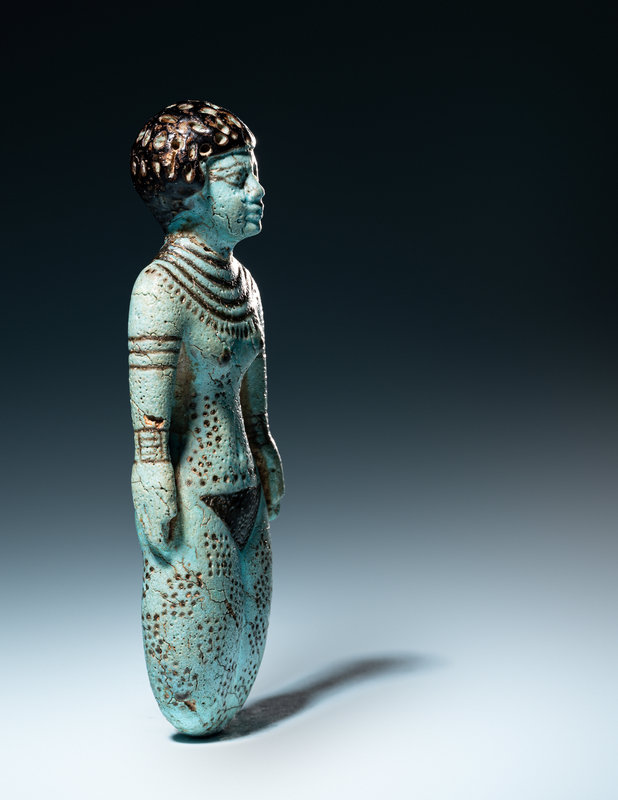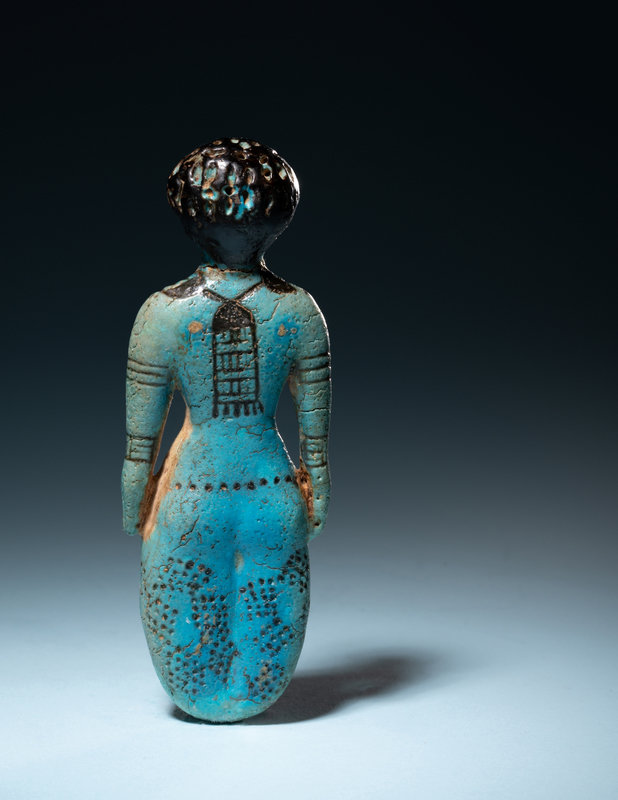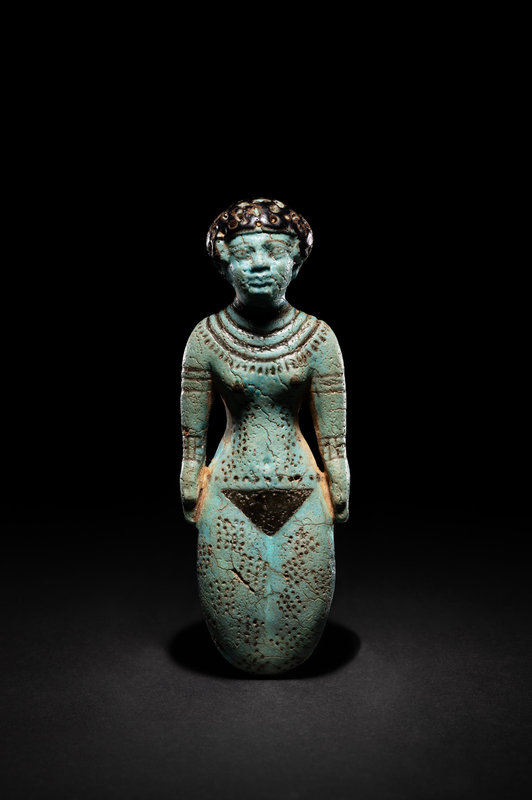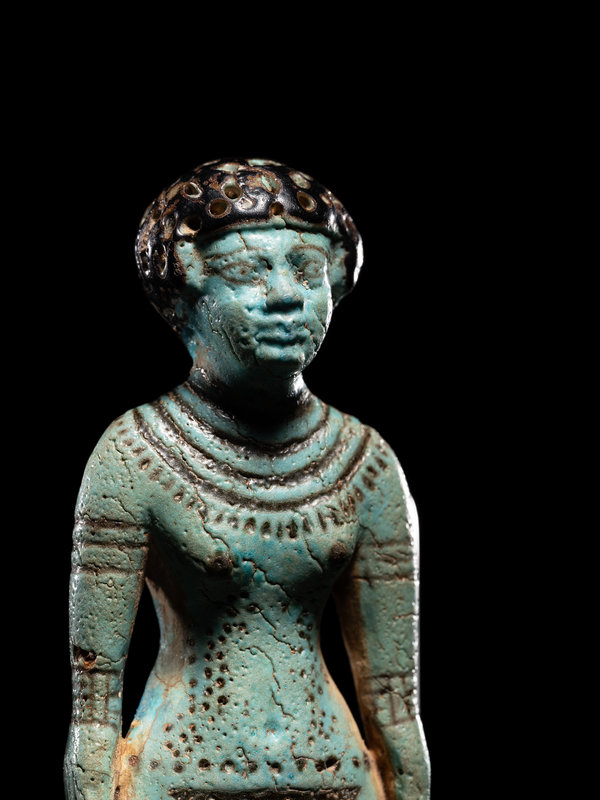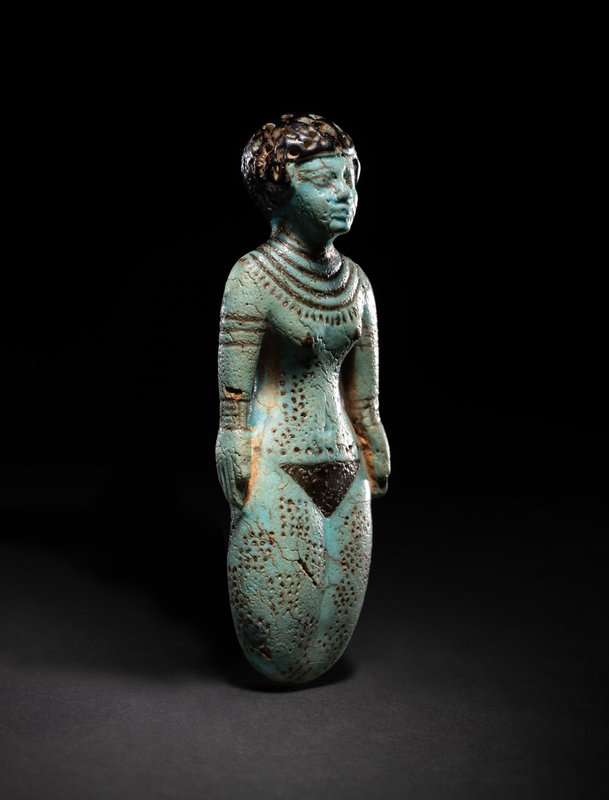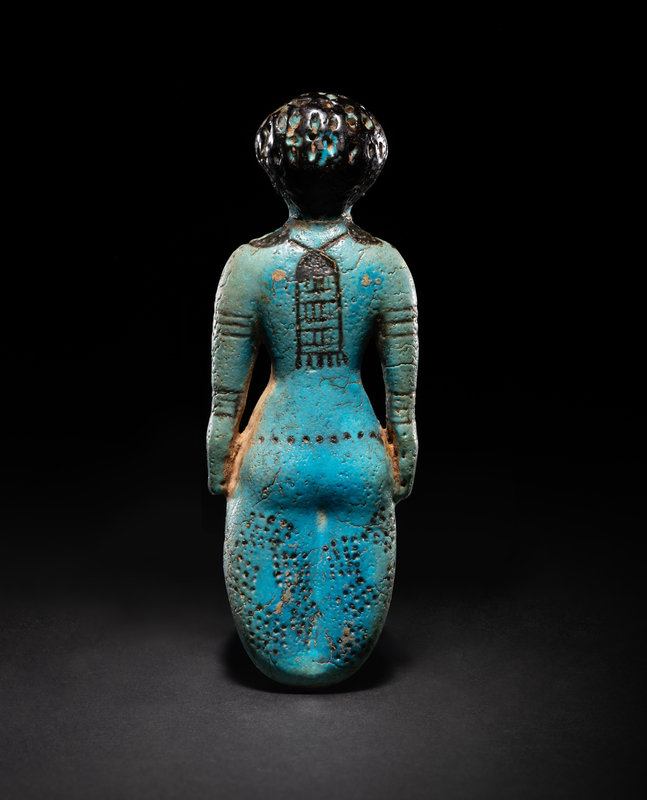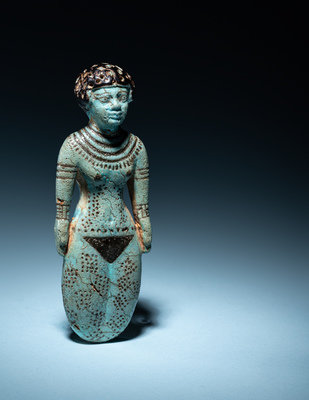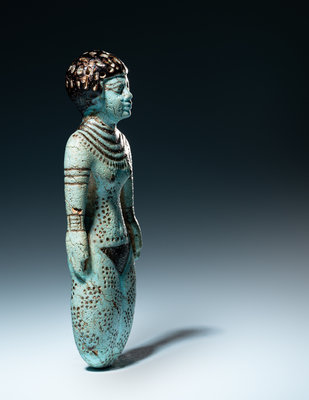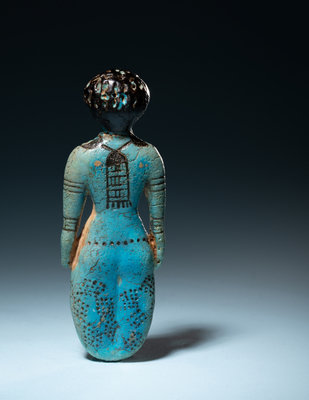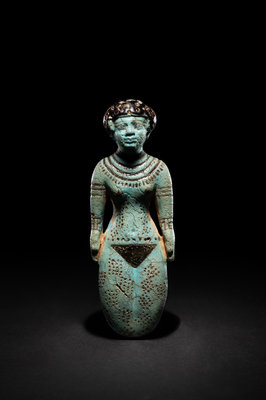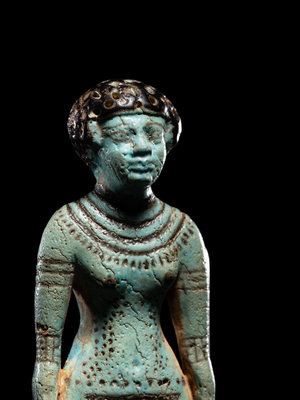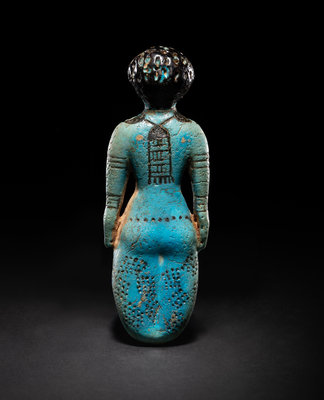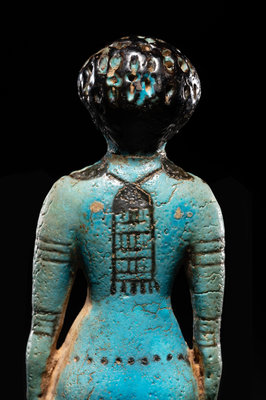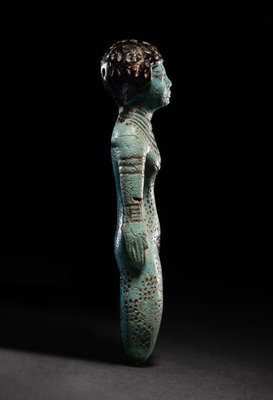Lot 21
An Egyptian Faience Female Figure
Sale 1035 - Antiquities and Ancient Art: A Study
May 26, 2022
10:00AM CT
Live / Chicago
Own a similar item?
Estimate
$70,000 -
90,000
Price Realized
$107,500
Sold prices are inclusive of Buyer’s Premium
Lot Description
An Egyptian Faience Female Figure
Middle Kingdom, 12th Dynasty, 1991-1783 B.C.
Height 5 1/8 inches (13.02 cm).
Property from a Florida Private Collection
Provenance:
The Merrin Gallery, New York, 1990s.
Acquired by the current owner from the above.
Exhibited:
Cincinnati, Ohio, Mistress of the House, Mistress of Heaven: Women in Ancient Egypt. Cincinnati Art Museum, 20 October 1996 - 5 January 1997.
Brooklyn, New York, Mistress of the House, Mistress of Heaven: Women in Ancient Egypt. Brooklyn Museum of Art, 21 February 2007 - 18 May 2007.
Published:
A.K. Capel et al., Mistress of the House, Mistress of Heaven: Women in Ancient Egypt (Exhibition Catalogue), Vermont, 1996, p. 65, no. 13.
Note:
This fetish object belongs to a group of female figures now thought of as Khener-dancers, and is one of the best known examples in private hands. These dancers played an important role in rituals to Hathor, the goddess of music, dance, love, fertility, and resurrection. First discovered in tombs from the Middle Kingdom dating to the 12th Dynasty, these female figures were initially interpreted as “brides of the dead” or concubines. Like the wooden paddle dolls that precede them, over the last century these more naturalistic sculptures have been discovered near temples and domestic dwellings leading to an expanded interpretation of their significance.
Acquired by the current owner from the above.
Exhibited:
Cincinnati, Ohio, Mistress of the House, Mistress of Heaven: Women in Ancient Egypt. Cincinnati Art Museum, 20 October 1996 - 5 January 1997.
Brooklyn, New York, Mistress of the House, Mistress of Heaven: Women in Ancient Egypt. Brooklyn Museum of Art, 21 February 2007 - 18 May 2007.
Published:
A.K. Capel et al., Mistress of the House, Mistress of Heaven: Women in Ancient Egypt (Exhibition Catalogue), Vermont, 1996, p. 65, no. 13.
Note:
This fetish object belongs to a group of female figures now thought of as Khener-dancers, and is one of the best known examples in private hands. These dancers played an important role in rituals to Hathor, the goddess of music, dance, love, fertility, and resurrection. First discovered in tombs from the Middle Kingdom dating to the 12th Dynasty, these female figures were initially interpreted as “brides of the dead” or concubines. Like the wooden paddle dolls that precede them, over the last century these more naturalistic sculptures have been discovered near temples and domestic dwellings leading to an expanded interpretation of their significance.
Molded and glazed in blue faience with black details, this figure’s sensual curves and bright color conveys sexuality and vitality which are inherent qualities of the goddess Hathor. Her upper body is narrow with arms straight and a close-cropped coiffure, while the lower half is swollen with truncated legs and an exaggerated pubic-triangle. The object’s overall shape echoes that of a menat, a sacred symbol of Hathor. The crown of the head is drilled with delicate holes for the insertion of real hair, and the numerous dots and dashes across her thighs and stomach symbolize tattoos. These, too, personify attributes of Hathor. In ancient Egypt, hair was seen as a symbol of resurrection for its ability to regenerate after being cut, and lozenge patterned tattoos were exclusively used by women who wished to amplify their sexual appeal.
The figure is essentially in the nude wearing nothing more than jewelry. Yet even her jewelry and blue skin continue to emphasis fecundity. The hip chain around the waist represents cowrie shells—a vaginal symbol—and the menat necklace with counterpoise around the neck is worn to foster fruitfulness and good health. Called tjehnet by the ancient Egyptians, meaning that which is brilliant or scintillating, faience was often used to describe the attractiveness of a woman’s skin. Indeed, from the Instructions of Ptahhotep, the vizier emphasizes the power of seduction by warning “do not be taken by a woman with a body of tjehnet.”(R. Bianchi, Gifts of the Nile, p. 25) This exquisite figure embodies the enchanting beauty and fruitfulness that could seduce all who lay their eyes upon her.
For comparative examples, see E.F. Morris, Paddle Dolls and Performance. Journal of the American Research Center in Egypt, 47, 2011, pp. 71–103; F. Friedman et al, Gifts of the Nile: Ancient Egyptian Faience (Exhibition Catalogue), New York, 1998, p. 104, and W.C. Hayes, The Scepter of Egypt: A Background for the Study of the Egyptian Antiquities in the Metropolitan Museum of Art, New York, 1990, p. 221.
For comparative examples, see E.F. Morris, Paddle Dolls and Performance. Journal of the American Research Center in Egypt, 47, 2011, pp. 71–103; F. Friedman et al, Gifts of the Nile: Ancient Egyptian Faience (Exhibition Catalogue), New York, 1998, p. 104, and W.C. Hayes, The Scepter of Egypt: A Background for the Study of the Egyptian Antiquities in the Metropolitan Museum of Art, New York, 1990, p. 221.
Condition Report
Contact Information
Auction Specialist

